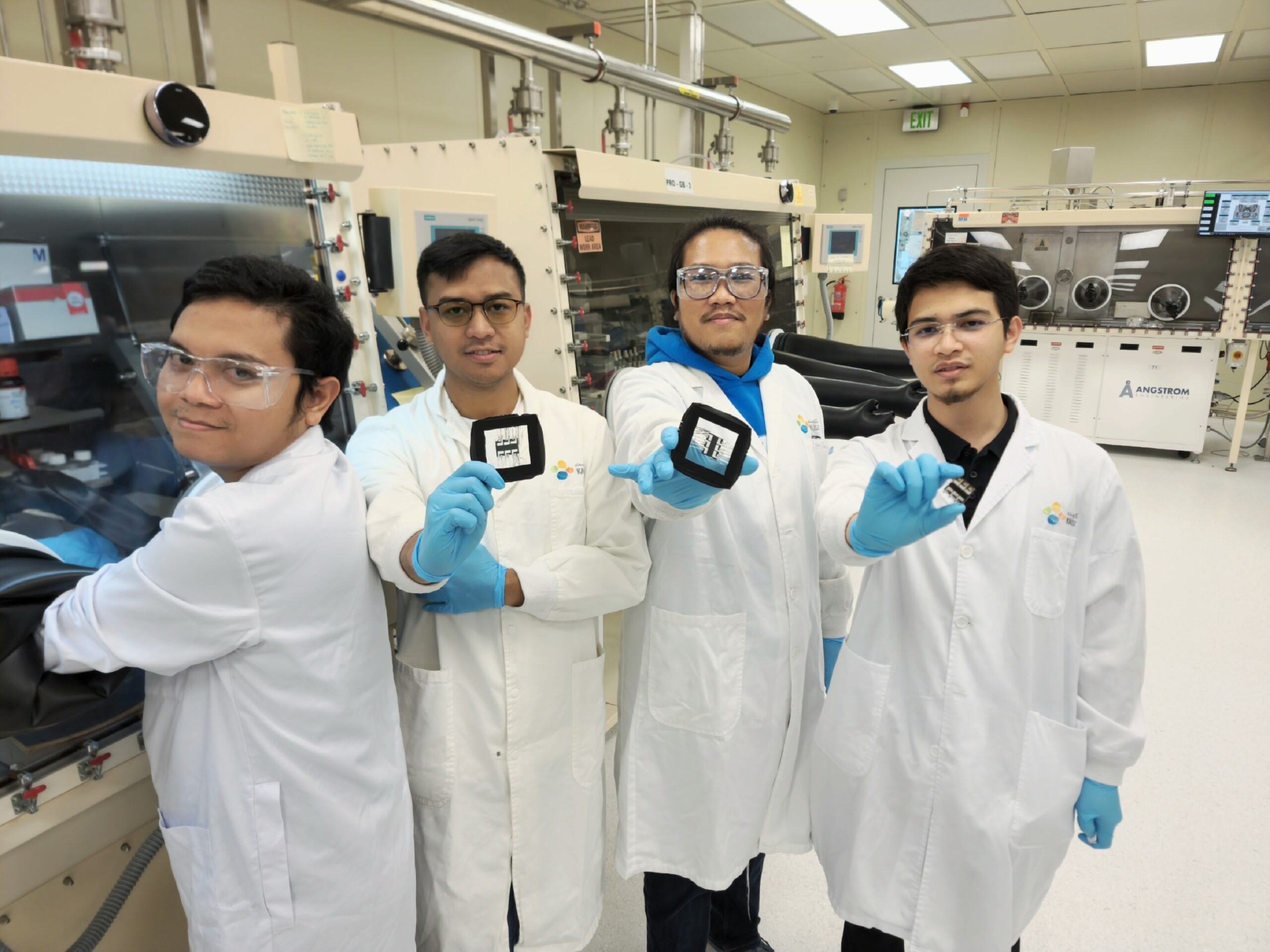Thin layer solution unlocks stability and efficiency in perovskite solar cells

Four of the authors holding their perovskite solar cells (left to right): Imil Fadli Imran, Randi Azmi, Drajad Utomo and Adi Prasetio.
KAUST scientists report in Nature a new strategy in the design of perovskite solar cells that extends their stability and raises their efficiency to levels more comparable with more expensive silicon solar cells. Their solution involves thin perovskite layers at the top and bottom of the solar cell interface. The finding is expected to stimulate more investment in solar power by more nations and industries, including Saudi Arabia, which expects approximately 70% of its renewable energy by 2030 to come from solar.
Although perovskite and silicon are both crystals, perovskite solar cells are approximately half the price to construct than silicon solar cells. They are also more flexible, expanding the number of applications in which they can be deployed. Finally, because they can absorb a wider spectrum of visible light wavelengths, perovskite solar cells are expected to achieve higher energy capacity than their silicon counterparts. However, perovskite solar cells will not overtake silicon solar cells no matter the cost so long as certain limitations remain.
"Stability is the biggest issue. Because we use low temperatures [in the synthesis], defects are unavoidable. The solution is passivity materials with scalable solutions," said KAUST Postdoctoral Scientist Randi Azmi, the lead author of the study.
Thin layers that are deposited onto the top and bottom of the 3D perovskite interface in the solar cell generally provide the best passivity. To maximize performance, these crystal structures must be controlled for their thickness, purity and dimension.
The research team, led by KAUST Professor Stefaan De Wolf and included scientists based in South Korea and China, tested several commercial ligands before identifying the one that best interacted with the 3D perovskites for passivation. This ligand did not wash away during the deposition process, maintaining a pure composition in the thin layers, resulting in an effective heterojunction on both the top and bottom sides of the 3D perovskites.

A photo of a perovskite solar cell.
The scientists show that perovskite solar cells with this new heterojunction have a power conversion efficiency of 25.6%, which is comparable with silicon solar cells and higher than standard perovskite solar cells. More importantly from a stability perspective, the efficiency had relative loss of only 5% after 1000 hours of exposure to high heat, whereas cells designed with other passivity materials saw relative losses of around 20%.
Further, by understanding how the ligand stabilizes the thin layers through a comprehensive characterization analysis that included electron microscopy operated by the KAUST Core Labs as well x-ray scattering and photoelectron spectroscopy will allow for further optimization of the heterojunction for higher stability.
"The elegance of our work is the simplicity and scalability. Other perovskite labs should be able to incorporate our solution into their workflow," said De Wolf.
After spending three years in the De Wolf lab developing perovskite solar cell technology, Dr. Azmi expects to join the Chinese University of Hong Kong in Shenzhen, China, as an assistant professor later this year.

